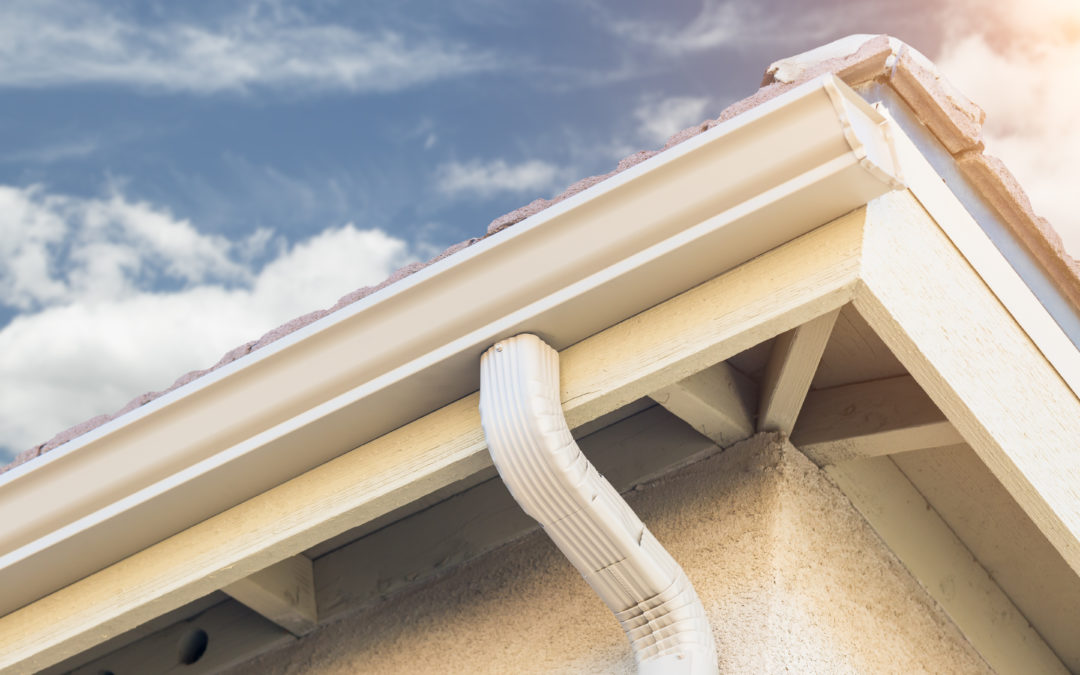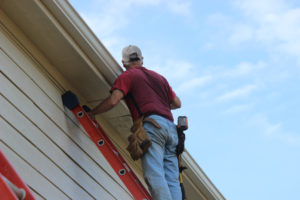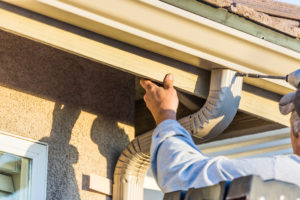The Gutter Installation Process: A Helpful Step-By-Step Guide
Gutters tend to be one of those universally disliked features of any home. While they serve an important purpose, very few homeowners relish the idea of cleaning out gutters, let alone getting them replaced.
Just like every other area of your home, gutters take a bit of maintenance, and eventually, they do wear out. If your rain gutters and downspouts need updating, here’s what you can expect from the gutter installation process by a high-quality roofing professional.
What To Expect From the Gutter Installation Process
The average lifespan of a gutter system is about 20 years – if you keep up with exceptional maintenance, you might be able to stretch that out. If your gutters are getting close to that 20-year mark, you might be thinking about what it will take to get those old gutters replaced.
Here’s a step-by-step guide to what you can expect from the new gutter installation process.
Step 1: Remove the Old Gutters (If You Have Them)
Before you can put new gutters on, the old ones have to come off. The first step in any gutter installation project is to carefully remove the old gutters and downspouts from a home’s eaves and fascia brackets.
If you’re still looking for the right roofing contractor to complete your gutter installation project, it’s always good to ask how they plan to remove your old gutters. They should be able to tell you what steps they’ll take to minimize any potential damage to your eaves.
If you’re building a new home or adding gutters to a house that didn’t previously have gutters, you won’t have to worry about this step! Your roofer can move right to Step 3 of the process.
Step 2: Check for Any Damage
If your home does have existing gutters to remove, the next step is to check for any damage behind the old gutters. Depending on how long the old gutters were on your home, your roofing professional might find rotted boards or unusable pieces of fascia. These will have to be replaced before your new gutter system is installed.
A quality roofer with years of experience will inspect your eaves and fascia, making any necessary improvements before moving on to the next step of the gutter installation process.
Step 3: Measure and Prepare
Once troublesome boards have been replaced, your roofer can take proper measurements of your home. With the old gutters off, it’s easier to measure precisely where new gutters should go, how far the gutters run, the best downspout location, and what angle your roofer will have to connect the gutter corners.
The measurement process is one of the most important parts of installing gutters. The more precise your roofer’s measurements, the better your installation project will go, and the better the performance you can expect from your new gutter system. With measurements in hand, your roofing professional can prepare all the materials for your brand-new gutter system, including downspout outlets and corner pieces.
When it comes to gutter installation, a lot of work can be done before attaching the new gutters to your home. Your gutter installation pro will measure and cut your new gutters according to their measurements, assemble any necessary corners, and make sure they cut out the appropriate holes for your new downspouts.
Step 4: Install the New Gutters
Now that your gutter materials are all prepped and ready to go, your roofer will do the actual gutter installation. This process will take a few crewmembers but can generally be finished in a day or so, depending on the size and height of your home.
Most reputable gutter installation pros will use special screws to affix your gutters to the fascia boards of your home. Screws are better options than nail heads because they keep the gutters more secure.
Step 5: Install Downspouts and Downspout Elbows
The downspouts are the last piece of the system to be installed for seamless guttering. Since your gutter installation pro will have pre-cut holes for each downspout, the installation won’t take too much time, but it is critical.
Your downspouts are responsible for carrying precipitation down and away from your home, where it can’t damage your foundation or flood your basement. Make sure your roofer installs downspouts and elbows that are appropriately directing water and precipitation out and away from your home to prevent future problems.
Step 6: Cleanup
What’s the last step of gutter installation? Cleanup – of course! Like many roofing projects, a gutter installation can get messy. Quality roofing professionals will work hard to make sure your home is left exactly the way they found it. They’ll remove any leftover gutter pieces and components and use a large magnet to pick up as many dropped screws and metal pieces as possible.
Werner Roofing Is Here for Your New Gutter Installation Process
Do you need to invest in new gutters? Werner Roofing can help! As one of West Michigan’s premier residential roofers, we’re happy to install a variety of gutters on new and older homes. Give us a call at 616-844-5382 or contact us online today for your free, no-obligation quote.




